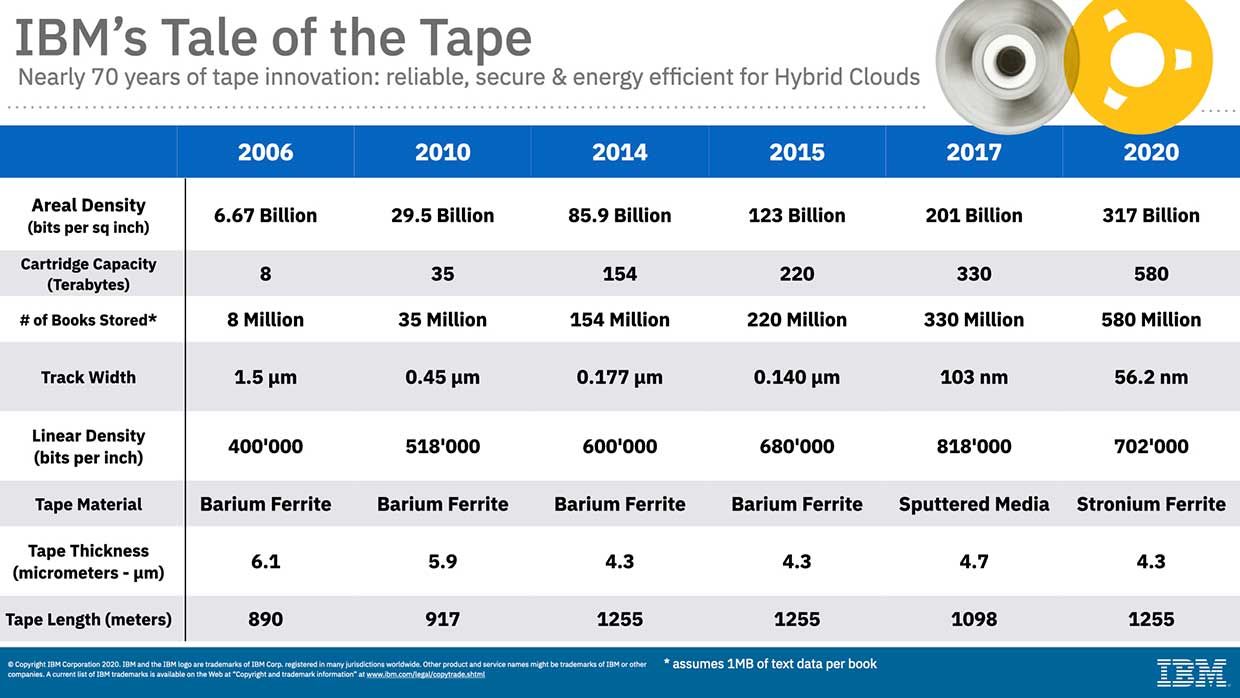IBM Makes Tape Storage Better Than Ever
Introduced by strains of the Strauss waltz that served as the soundtrack for 2001: A Space Odyssey," IBM demonstrated a new world record in magnetic tape storage capabilities in a live presentation this week from its labs in Zurich, Switzerland.
A small group of journalists looked on virtually as IBM scientists showed off a 29-fold increase in the storage capability of its current data-tape cartridge, from 20 terabytes (TB) to 580 TB. That's roughly 32-times the capacity of LTO-Ultrium (Linear Tape-Open, version 9), the latest industry-standard in magnetic tape products.
While these figures may sound quite impressive, some may wonder whether this story might have mistakenly come from a time capsule buried in the 1970s. But the fact is tape is back, by necessity.
 Photo: IBM Research Mark Lantz
Photo: IBM Research Mark Lantz Magnetic tape storage has been undergoing a renaissance in recent years, according to Mark Lantz, manager of CloudFPGA and tape technologies at IBM Zurich. This resurgence, Lantz argues, has been driven by the convergence of two trends: exponential data growth and a simultaneous slowing down of areal density in hard-disk drives (HDD).
In fact, the growth rate of HDD areal density has slowed down to under an 8% compound annual growth rate over the last several years, according to Lantz. This slowdown is occurring while data is growing worldwide to the point where it is expected to hit 175 zettabytes by 2025, representing a 61% annual growth rate.
This lack of HDD scaling has resulted in the price per gigabyte of HDD rising dramatically. Estimates put HDD bytes at four times the cost of tape bytes. This creates a troublesome imbalance at an extremely inopportune moment: just as the amount of data being produced is increasing exponentially, data centers can't afford to store it.
Fortunately a large portion of the data being stored is what's termed cold," meaning it hasn't been accessed in a long time and is not needed frequently. These types of data can tolerate higher retrieval latencies, making magnetic tape well suited for the job.
Magnetic tape is also inherently more secure from cybercrime, requires less energy, provides long-term durability, and has a lower cost per gigabyte than HDD. Because of these factors IBM estimates that more than 345,000 exabytes (EB) of data already resides in tape storage systems. In the midst of these market realities for data storage, IBM's believes that its record-setting demonstration will enable tape to meet its scaling roadmap for the next decade.

This new record involved a 15-year journey that IBM had undertaken with Fujifilm to continuously push the capabilities of tape technology. After setting six new records since 2006, IBM and Fujifilm achieved this latest big leap by improving three main areas of tape technology: the tape medium, a new tape head technology with novel use of an HDD detector for reading the data, and servo-mechanical technologies that ensure the tape tracks precisely.
For the new tape medium, Fujifilm set aside the current industry standard of barium ferrite particles and incorporated smaller strontium ferrite particles in a new tape coating, allowing for higher density storage on the same amount of tape.
With Fujifilm's strontium ferrite particulate magnetic tape in hand, IBM developed a new low friction tape head technology that could work with the very smooth surfaces of the new tape. IBM also used an ultra-narrow 29 nm wide tunnel-magnetoresistance (TMR) read sensor that enables reliable detection of data written on the strontium ferrite media at a linear density of 702 kilobytes per inch.
IBM also developed a family of new servo-mechanical technologies for the system. This suite of technologies measures the position of the tape head on the tape and then adjusts that position so the data is written in the correct location. Transducers then scan the center of the tracks during read-back operation. In the aggregate all these new servo technologies made head positioning possible at a world record accuracy of 3.2 nm, this while the tape is streamed over the read head at a speed of about 15 km/h.
Alberto Pace, head of data storage for the European Organization for Nuclear Research (CERN), put the development in context: Only 20 years ago, all the data produced by the old Large Electron-Positron (LEP) collider had to be held in the big data center. Today all that data from the old LEP fits into a cabinet in my office. I expect that in less than 20 years we will have all the data from the Large Hadron Collider that now resides in our current data center fitting into a small cabinet in my office."